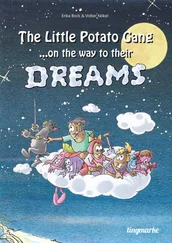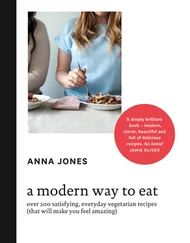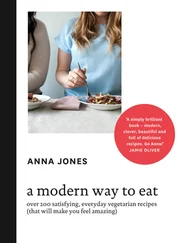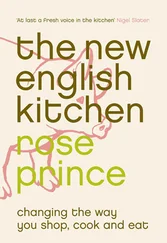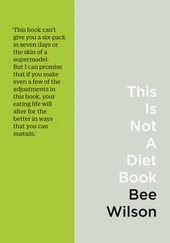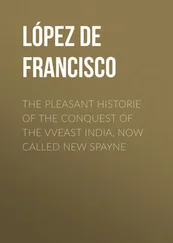1 ...6 7 8 10 11 12 ...18 Eating in South Africa, a parched land with relatively poor soil quality, has never been ‘heaven on earth’, as South African dietitian Mpho Tshukudu has written. There is no golden age of food to return to. But nor have South Africans ever had to face food dilemmas quite like the ones they face today on a daily basis. One mother in her forties who came to Tshukudu’s clinic recalled that as a child growing up in a rural village, she walked for miles and ate home-cooked foods every day, always with a vegetable or some kind of legume. She knew no one who was obese and never needed to visit a doctor. But now, this woman lived in the city with her husband and three children and they all ate a lot of takeaway food and were frequently unwell. Her nine-year-old daughter was already so big that, to her distress, she had to buy her clothes in the grown-up section of the store. 18
In some ways, South Africa’s new unhealthy pattern of eating is distinctive to the country itself, and to the injustice of the apartheid years. During apartheid, the state controlled who moved to towns and who stayed in the country and no black farmers were allowed to own land outside the ‘homelands’. Adults living in black townships often had long commutes to jobs in the white cities which left less time for cooking than in the past and as a result, some of the old traditional dishes died out.
But the most extreme and sudden changes to South African eating happened after the end of apartheid in the mid-1990s, during and after Nelson Mandela’s presidency, when thousands of black South Africans were lifted out of poverty for the first time. People were free to move to the cities; and they did. By many metrics, life got better and easier, but much of what people were eating now was less healthy than it had been before. As a newly open economy, the country was flooded with fast food and processed food from both home and abroad. From 2005 to 2010, the sales of processed snack bars in South Africa increased by more than 40 per cent. 19
New freedom and city living; new snacks and abundance; new obesity and type 2 diabetes: the patterns of both eating and health have shifted fast in South Africa since the 1990s. The speed at which diets are changing here is vertiginous, yet the pattern is a familiar one. It is almost as if South Africa – along with so many other countries in the world – is following a script for eating set by America fifty or so years ago.
Growing up in 1950s Wisconsin, Barry Popkin drank only tap water and milk, except for a small glass of orange juice to start the day. His father drank tea and his mother had coffee. At the weekend, as he has explained in his 2009 book The World is Fat , his parents might take a glass of wine for a treat. No one in Popkin’s family drank sweetened lattes or sugary energy drinks and the adults would not have dreamed of drinking alcohol every day. There were no smoothies and no white chocolate mocha frappuccinos. Popkin – Professor of Nutrition at Chapel Hill University, North Carolina – has made it his life’s mission to study the reasons why our patterns of eating and drinking are so different from those of the past; and to figure out ways to save the best of the changes and move beyond the worst of them. 20
During the months when I was first researching this book, it felt as if all roads led to Barry Popkin. Whether I was looking for hard facts on snacking or sugar or statistics about how food had changed in China over the past decade, Popkin always seemed to have co-authored the definitive paper on the subject. He was also involved in working with governments to create better food policies in many countries including Mexico, Chile, Colombia and Brazil. His website showed a photo of a cheery-looking man in his seventies with a white beard, but this Popkin was so prolific, I was starting to doubt whether he really existed, or whether he was in fact a team of nutrition academics working out of a factory somewhere.
When I contacted Popkin to arrange a telephone interview, he emailed straight back and told me he was having a ‘horrendous’ week but could take my call at 9 a.m. EST precisely on Monday morning. A gruff-voiced man answered the phone and immediately started explaining how food had radically changed in recent years, not just for a few people but for billions across the world. He spoke with great authority about the marketing of crisps and convenience foods; about the rise of highly sweetened drinks and the fall of home cooking. ‘It’s a radical change,’ Popkin told me, ‘and it’s going to be a big battle to reverse it.’
Popkin’s interest in nutrition started, he has written, during a year in India in 1965–6 when he was an economics student living in shantytowns in Old Delhi. India was a shock because after his modest but comfortable American childhood, Popkin was exposed to the extremes of hunger first hand. Returning to the States determined to use economics to help improve the way people ate, he assumed that the great problem to be solved with respect to nutrition would always be hunger. 21
By the 1980s, however, Popkin had noticed that obesity had begun to replace hunger as the main nutritional problem in the Western world and he observed, aghast, as the same set of chronic diseases swept across the globe. He was one of the first experts in the field to argue that obesity was a global problem, not a phenomenon of the West. Popkin coined the phrase ‘nutrition transition’ to explain the changes he saw happening around the world as countries developed from poverty to riches. As a country becomes richer and more open to global markets, its population almost inexorably starts to eat differently, consuming more oil and meat and sugar and snack foods and fewer wholegrains and pulses. Wherever this diet was adopted, Popkin noticed, it brought with it easier lives as well as a host of diseases. 22
One way to think about human history is as a series of diet transitions, with each stage driven by changes in the economy and society, plus shifts in technology, climate and population. In the beginning, we were hunter-gatherers, eating a mostly low-fat diet of varied wild greens, berries and wild animals. During the Upper Paleolithic Period, which began about fifty thousand years ago, more than half of our food came from plants and the rest came from animals. In these societies, people were forced to collaborate to collect food. We had discovered fire but not cooking pots. Life expectancy was low – you were at risk of dying a violent death, if infectious diseases didn’t get you first. But the archaeological record suggests that (depending on where in the world they lived) the humans in this phase who survived into adulthood experienced mostly good health, with few nutritional deficiencies.
Stage two, starting around 20,000 BCE, was the agricultural age, which was characterised by a switch to staple cereals and a huge increase in population. Now we had clay cooking vessels and more sophisticated grindstones at our disposal. The hunter-gatherer diet of wild plants and meats gave way to diets based on staple cereals, whether it was the rice and millet of China or the barley of Mesopotamia. Farming bestowed huge benefits. It created food surpluses for the first time, which freed many people from the task of food gathering and gave rise to vast new civilisations such as that of the Indus Valley, where modern-day Pakistan lies. Grains were a very efficient way to generate calories from the land. Without agriculture there would have been no cities, no politics, no human civilisation as we know it.
The downside of farming, however, was that it gave people a less varied range of foods than before. Along with the adoption of staple cereals, phase two saw a rise of famine and a sudden increase in diet-related problems. With diets that were often inadequate both in quantity and quality, humans shrank in stature and suffered from a range of deficiency diseases. The difference in human health between the diets of stage one and stage two is the rationale behind the popular ‘Paleo diet’ in which modern dieters try to turn the clock back by ten thousand years or so and eat as if farming had never been invented.
Читать дальше


